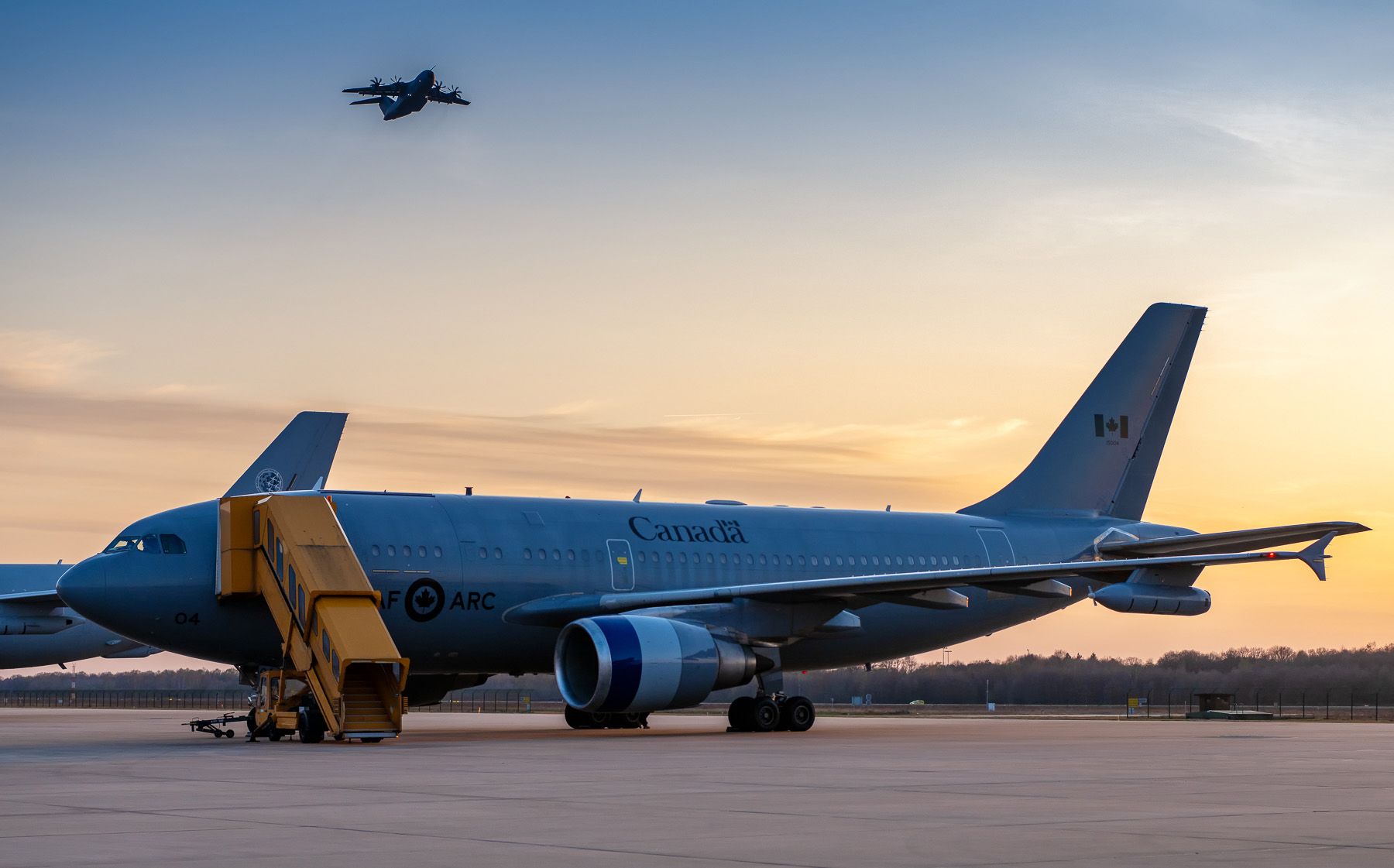With the current international geopolitical reality, the NATO alliance faces quite some threats and challenges, not only externally. Meanwhile, their forces continue to train to cope any threat to a member state as laid down in Article 5 of the alliance.
Text and photos: Emiel Sloot
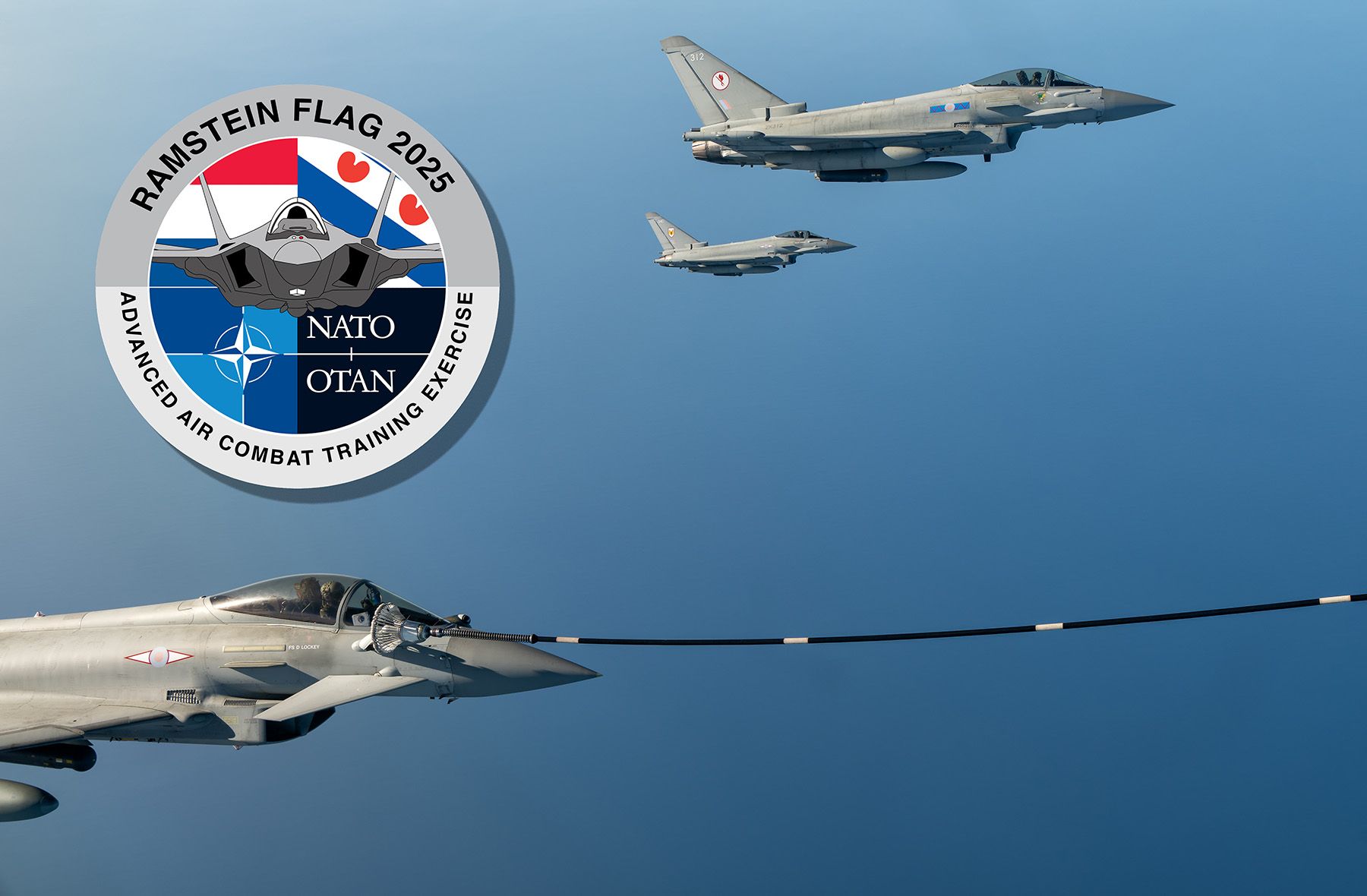
Minutes ago, several aircraft have taken off from their bases earlier. The overall mission commander assesses the situation, provided by various sensors via the so-called Link 16 system. A formation of F-35s is refuelling in the air from a dedicated NATO aircraft. A group of Typhoons will follow, nicely on time. The F-35s will soon be joined by a similar formation that took off from another base, in Denmark. The fifth generation fighters should clear the way by taking out any air threats towards the assigned target: a hostile missile site that creates a so-called bubble. Meaning, its range stretches well over friendly territory. The Typhoons, assisted with specialized F-16s equipped with HARM missiles to take their radar out, must take care of that.
The last F-35 of the formation has just left the A330 tanker. While moving towards the border, various adrenaline levels go slightly up.
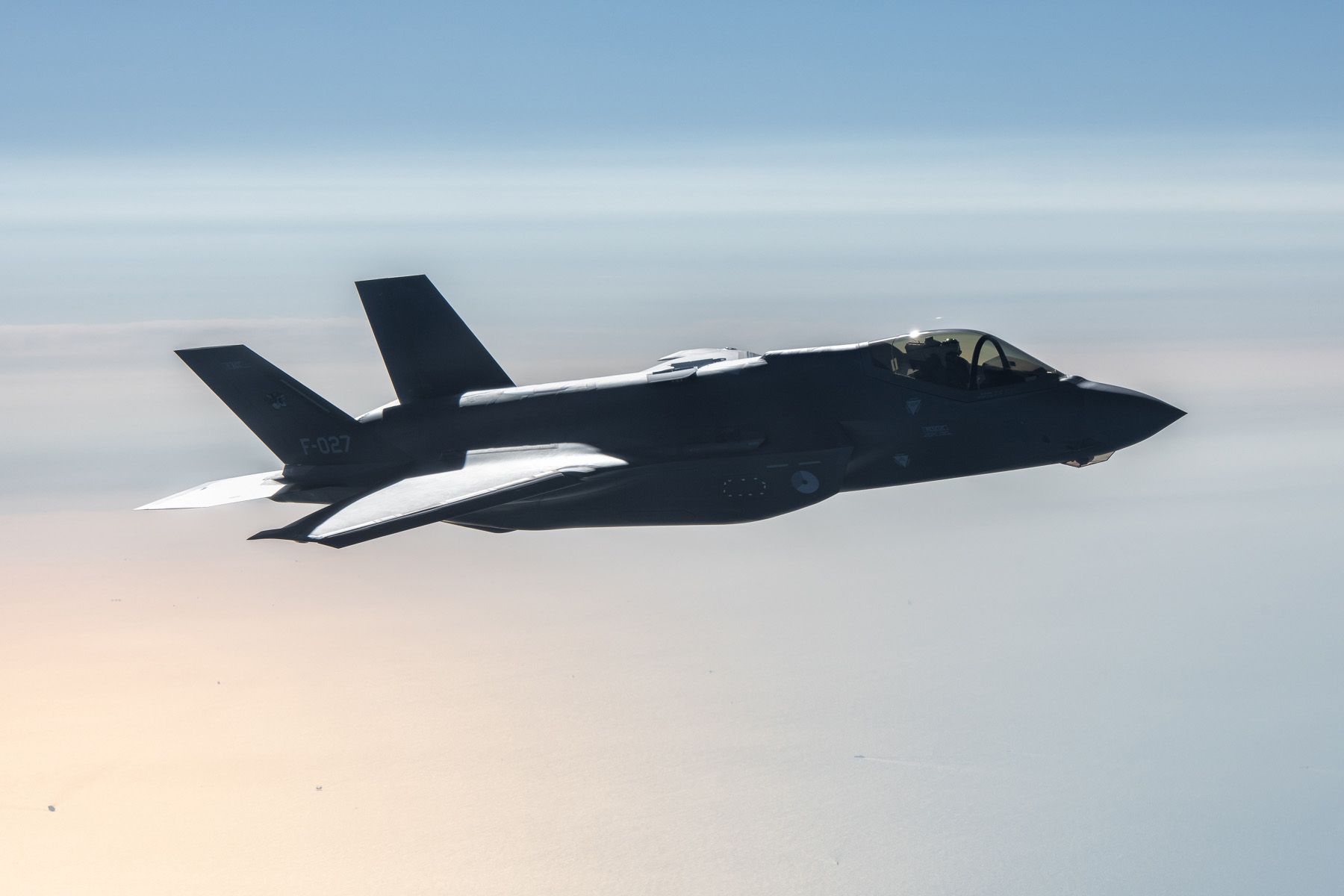
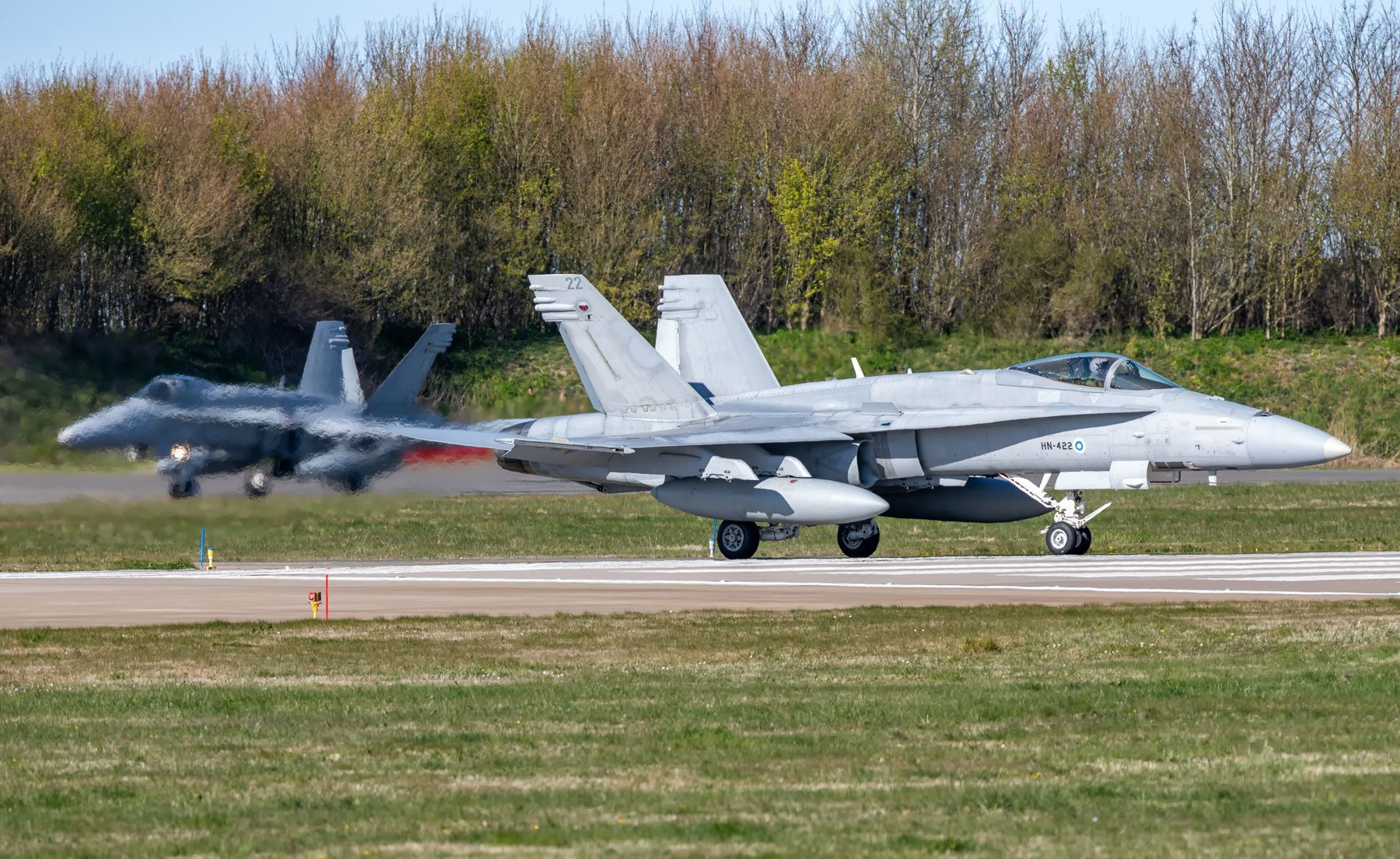
The road to Ramstein Flag
The scene outlined above is fictitious, but could very well represent a specific mission flown in exercise Ramstein Flag 25 (RAFL25), that ran from 31 March till 11 April 2025, organized by the NATO Air Command. With the focus on deploying air power, fifteen alliance members participated, and not exclusively with airborne assets. But before such a large operation can be conducted, many months of planning and preparation precede. Let’s close in on these, and explore a world full of acronyms.
Lieutenant Colonel Martin ‘Ami’ Friis of the Royal Danish Air Force is attached to the NATO Air Command, and as such responsible for making air war plans in case the alliance gets involved in a conflict. Friis explains the abbreviations mentioned in the five so-called lines of effort, being the subjects the Air Command would like to have covered in an exercise as these are regarded as most important in tomorrow’s conflict: “These LOEs are Counter Air-to-Air Defences (C-A2AD), Integrated Air and Missile Defence (IAMD), Air Command and Control (Air C2), Information Sharing, and Agile Combat Environment (ACE). Ideally, all would play a role. But first, to improve these we needed to bring in experts of all domains such as land, space, air, maritime, cyber, etcetera in trying to find out how can we actually face those scenarios that we can expect, based on the lessons that we learned from today’s conflicts like that on the Eastern front. At the end of the day, our team took all this views into consideration and translated it into an exercise. So that's the origin of the exercise Ramstein Flag.”
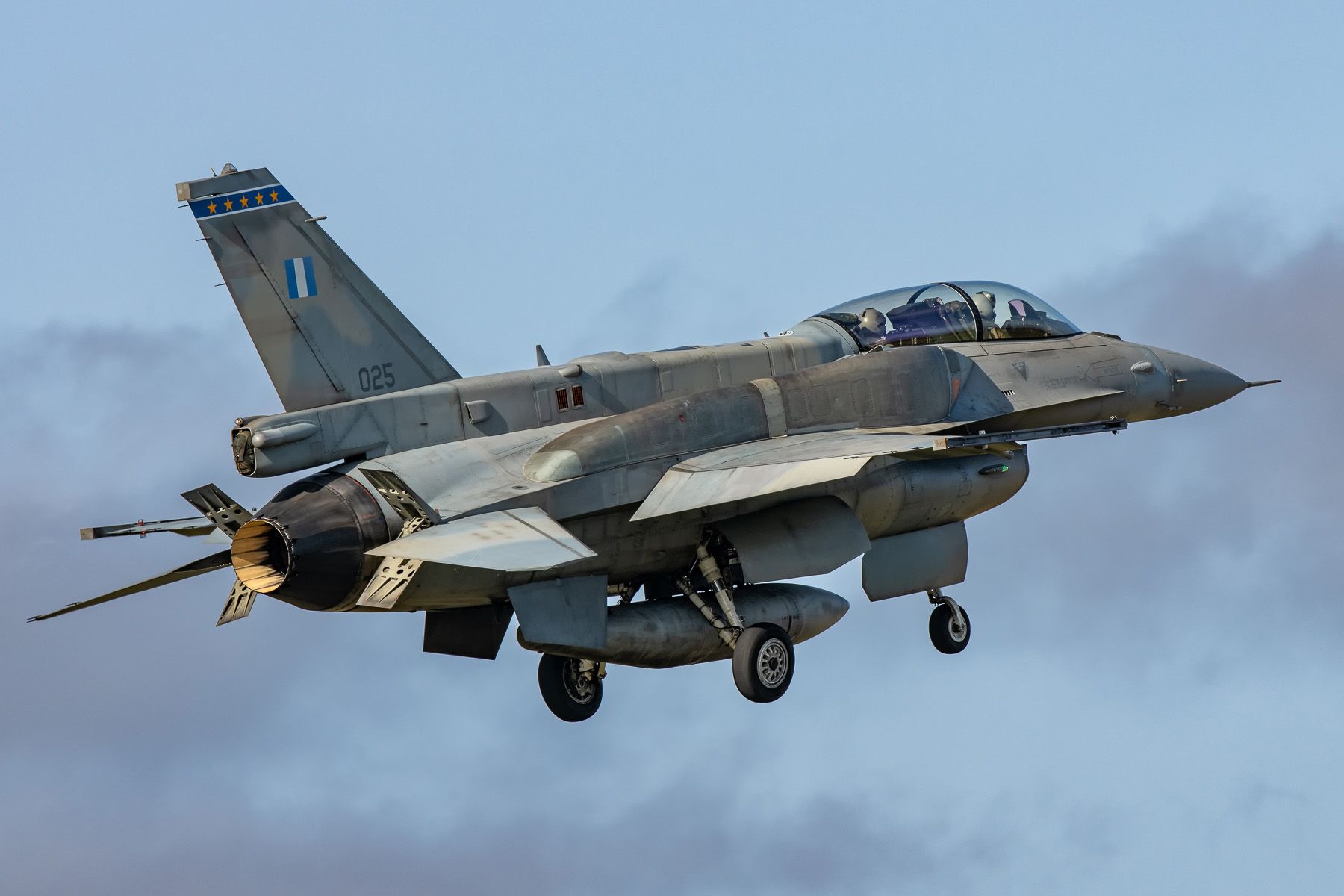
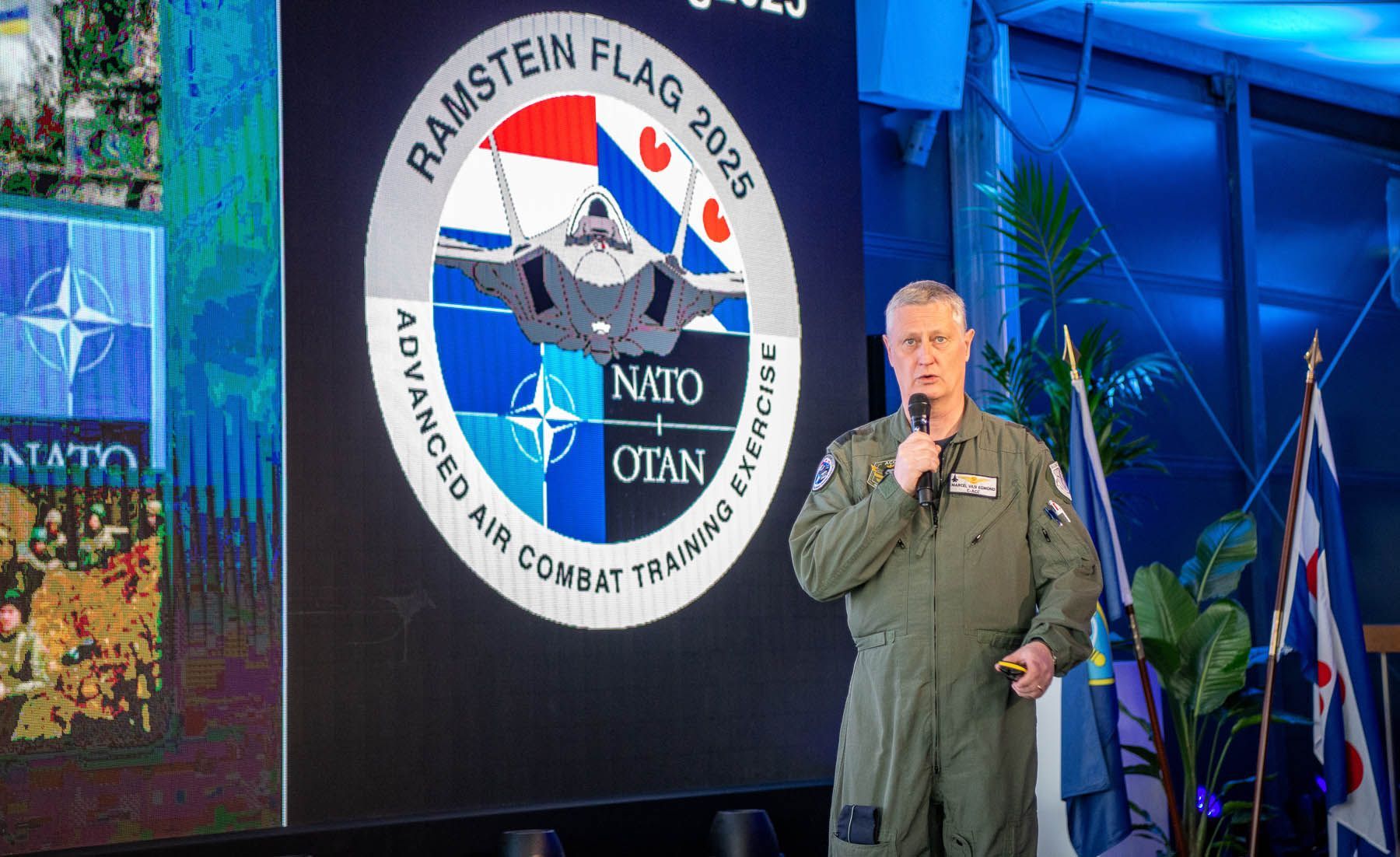
From Frisia to Ramstein
More on these subjects will be explained later in the article. For now, with the goals set, a location was required. The exercise areas over the North Sea, with Leeuwarden air base in the Netherlands conveniently located nearby, offered a favourable option. Commodore Marcel ‘Bo’ van Egmond, head of the Air Combat Command of the Royal Netherlands Air Force, was honoured to host Ramstein Flag 25, the second edition of this exercise.
“We have been conducting Frisian Flag exercises for a lot of years. For us, it is great that we have been recognised as being able to support and organize a high-quality exercise, with all the qualifications that are required to give our pilots the best training there is in the world, at least in their ability in this type of a theatre, and do that in a very organized and effective way.” Commodore Van Egmond reflects the recent history, as a perspective to what has lead to exercises such as RAFL25: “The world is not the same as it was ten, twelve years ago. 2014 was the first turning point in what we thought was going to be a nice flight and a very comfortable western world with a great transatlantic alliance, working towards peace and keeping peace as we had at this part of the world for over 80 years. However, at the same time, there was a lot going on in the rest of the world. We didn't really focus on our own theatre, because then it was more important to go somewhere else in the world where the politicians would send us to restore peace at places where things got out of hand a bit. But that reality has changed. In 2022, after Ukraine got invaded, we would fly four-hour missions from our home base, return, sleep in our own beds, and the next day we would fly again over Poland. All this to support the NATO deterrence and to reiterate the fact that we have a strong alliance that will not tolerate any incursions on our own soil.”
As mentioned, Leeuwarden used to host large, international Frisian Flag exercises. How does Ramstein Flag compare in view of these? Van Egmond explains: “During Frisian Flag, not only the participants were at one air base, but also mission planning, briefing, execution and the debrief was all done here at Leeuwarden. With Ramstein Flag, the amount of jets has grown significantly. Instead of some 60 aircraft operating from a single location, we now have more than 90 aircraft working together flying out of twelve bases. That obviously requires planning with people in all those different locations. That kind of coordination is new to us, so it is high-value training.”
When he learned about hosting Ramstein Flag, ‘Bo’ immediately became excited. “I have been flying F-16s until last year, and been in a lot of exercises. When I saw the mission scenarios, the only thing I wanted to do was jump in and go on a flight as well. Of course, I didn't, because there was other important stuff to do.”
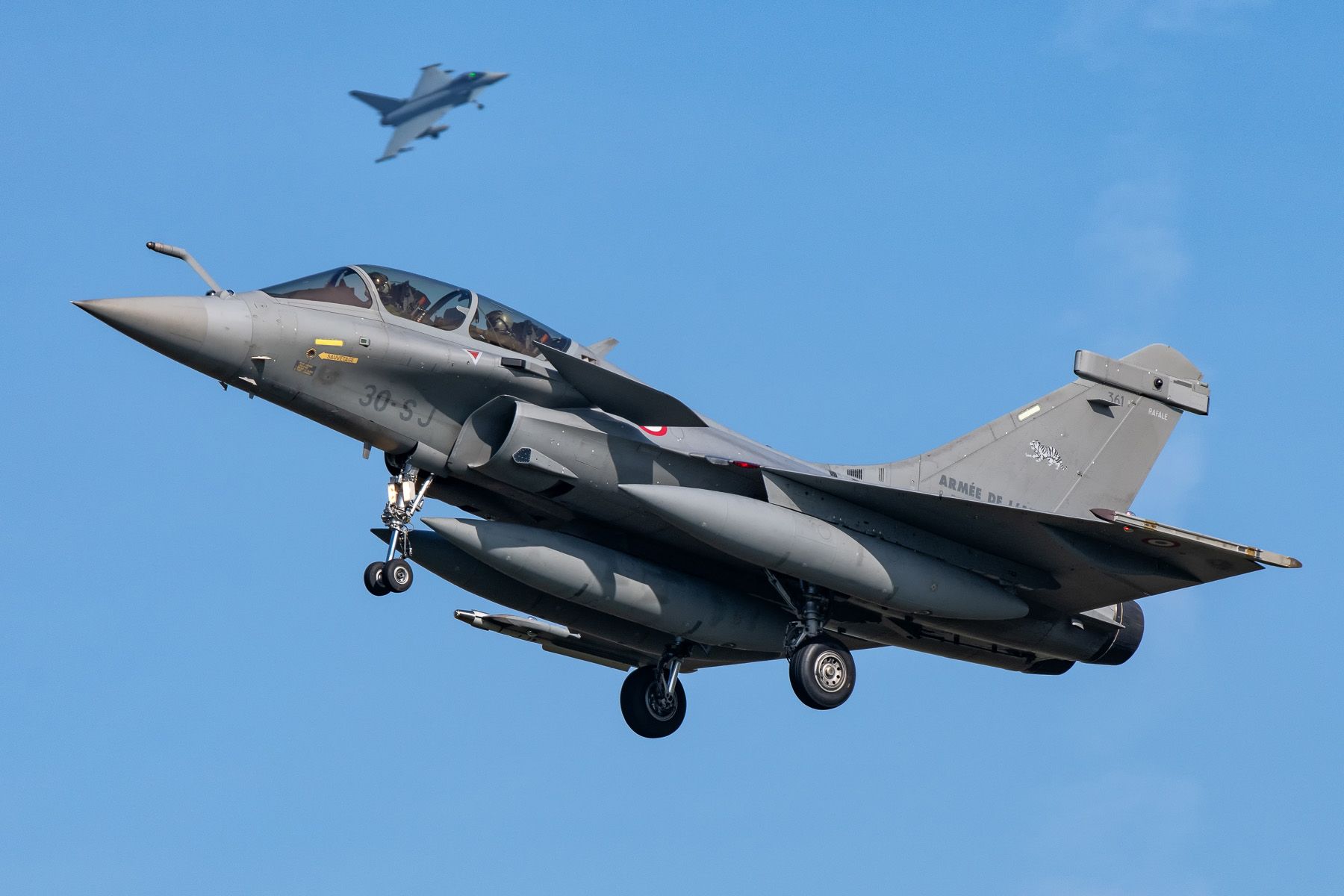
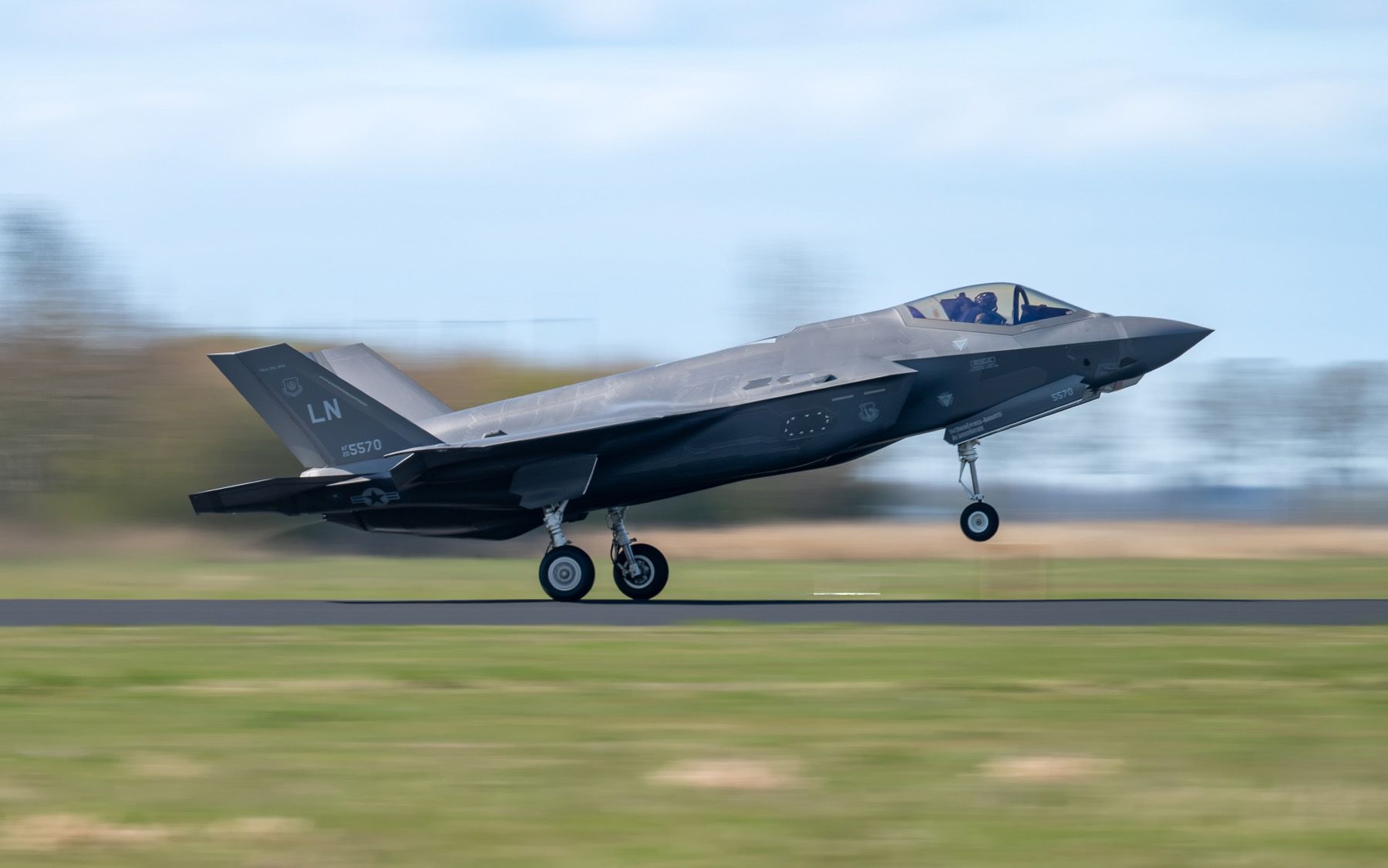
Overall goals to achieve
At some point, the mission scenarios were completed and fine-tuned, reflecting the outlined goals. Now the various locations were ready to receive the participants. During the last week of March 2025, fighters from Romania, Spain and Türkiye flew to the United Kingdom, while the Hungarian and Italian air force dispatched aircraft to Denmark. The bulk arrived at Leeuwarden air base, including Hornets and Gripens from the latest NATO members Finland and Sweden. A sidebar article with some extra information on the Swedish detachment can be found here.
The overall scenario for RAFL can be split into three different phases. But before diving a bit deeper into those, first let’s highlight some aspects in line with the earlier mentioned lines of effort, that pretty much covered the exercise as a whole. One is interoperability. Lt Col. Martin Friis explains: “It basically means to actually make sure that we can talk to each other. With our Link 16 system, we can talk digitally between units in the air as well as on the ground. Here, we used it to train how to join engagements and so on. Traditionally, we would divide the airspace into zones where air defence units on the ground and fighter aircraft in the air would have their areas of responsibility. However, to be more effective and utilize this sort of strength, we want to work together in the same zone, so we engage enemy aircraft both from the ground and the air. That has one obvious drawback, as if you don't do it correctly, you might shoot down your own aircraft. Therefore, this was one of the things we wanted to avoid by proper training.”
So, it is very important to communicate to ensure the right targets are attacked. Regarding the tactics, techniques and procedures for an air defence setup, these were significantly improved over the years, and thoroughly trained during RAFL25. Within this framework, it is interesting to see how NATO’s so-called fourth- and fifth-generation fighter aircraft perform.
“When you get new tools, you don't just simply throw out the older ones. You better use those tools together and actually find out how they can complement each other. For example, the F-35 has really great sensors, but it doesn't carry that many weapons internally. Whereas most of the fourth-gens, they have plenty of weapons,” says Friis.
Operating alongside other assets – not only air – was another aim for the exercise. Friis: “Most of the air forces train their own day-to-day operations, with lesser focus on how a big war is fought. What we were trying to achieve is actually giving them some small lessons, in why they're doing what they're trying to do and how that actually works in an Air Command and Control (Air C2) environment. Here, you use not only air forces or aircraft, but you take, again, all the tools from the toolboxes from the army, from the navy, from space, from cyber units, and from specific forces on the ground. We call this multi-domain operations.”
And then there is another crucial item in today’s battlefield to be effective: information and intelligence sharing. This was probably regarded the most important point of this exercise. Being at twelve different locations meant sharing information was vital to make sure everybody was on time at their stations to do the job. In view of the intelligence part, the exercise directors tried to give the respective mission commander a good grasp of what was happening in the exercise world, so he or she could take that into consideration in preparing the mission.
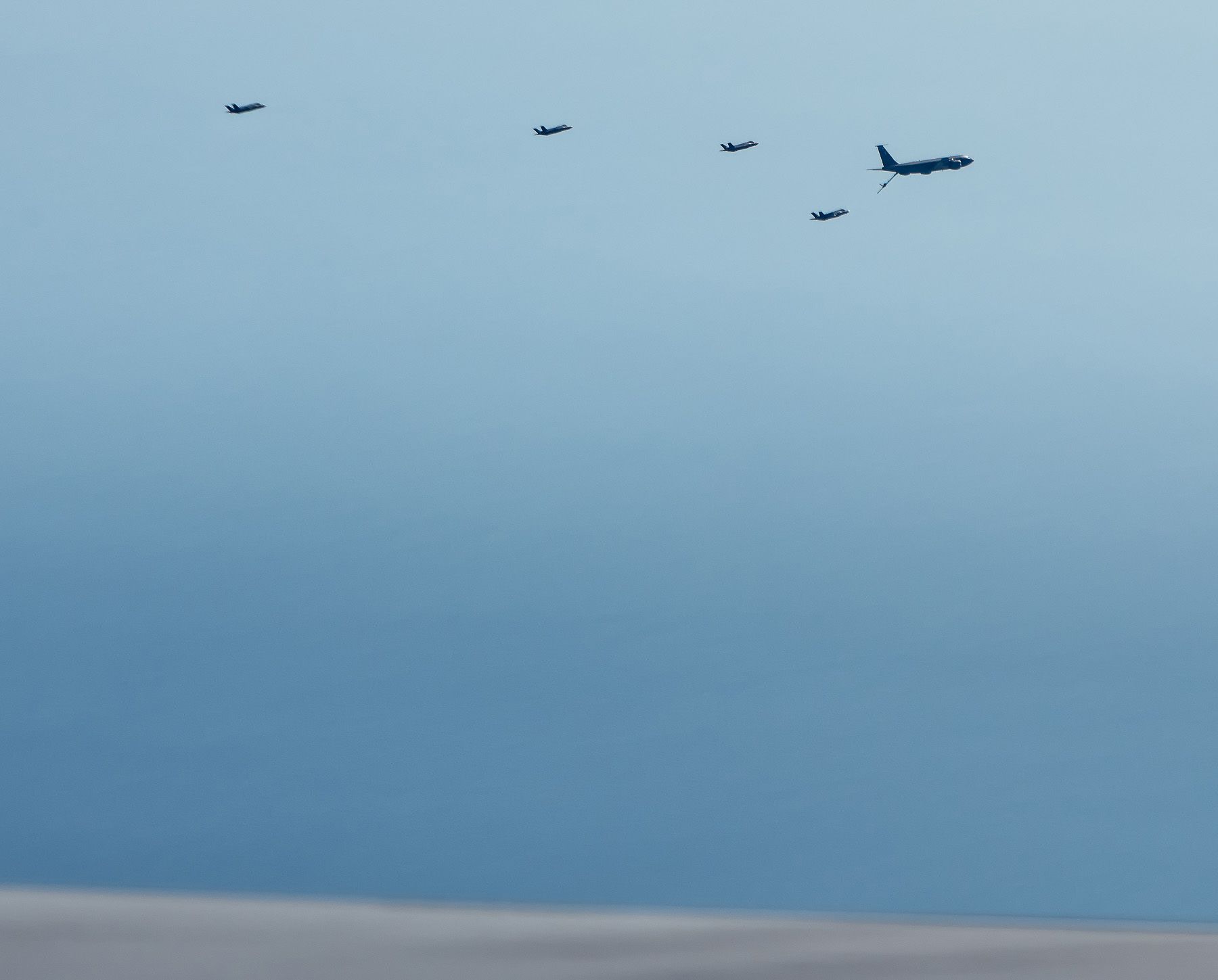
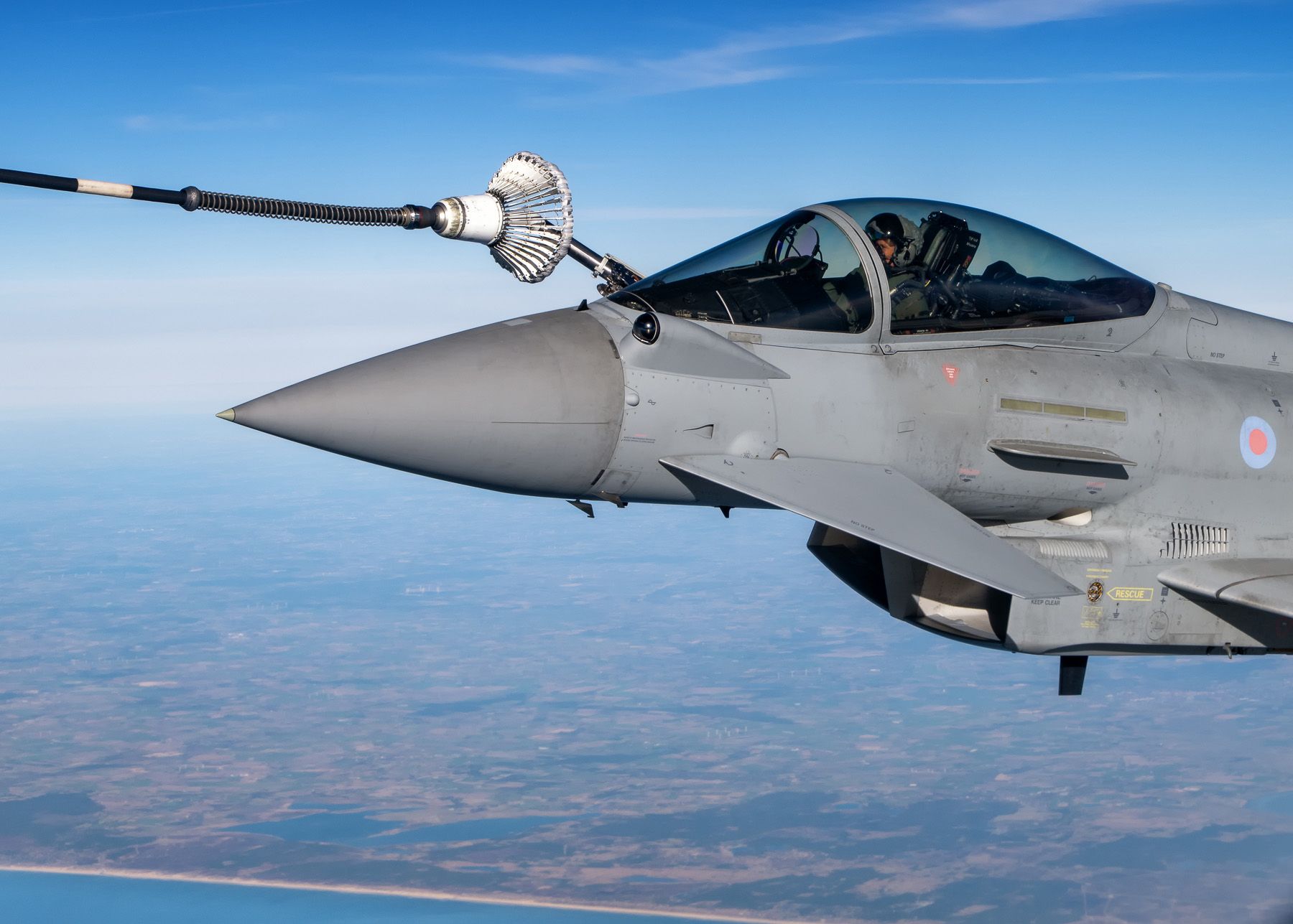
In the Deployable Air Control Centre (DARS) at Nieuw Milligen in the central part of the Netherlands, the operators have a good real-time 3D picture of the battlefield. The DARS collects information originating from participating aircraft like their onboard radars and threat identification systems, plus any similar information supplied by AWACS and/or surface-based sources.
Several bandits are closing in on the F-35s that are on their way to clear the way for other aircraft to eliminate an enemy SAM site. Have they been spotted somehow? The Blue Forces mission commander, having the same information, considers the options before the bandits become hostile. This Counter Air-to-Air Mission would now require the elimination of both aircraft and SAMs, but that is what they have been preparing for.
Then, in another direction, more possible enemy contacts appear, but the radar picture over that area seems to be garbled, possibly intentional. Are there assets left to check that out and counter that possible particular threat? Meanwhile, the first enemy aircraft are within missile range. Time to act.
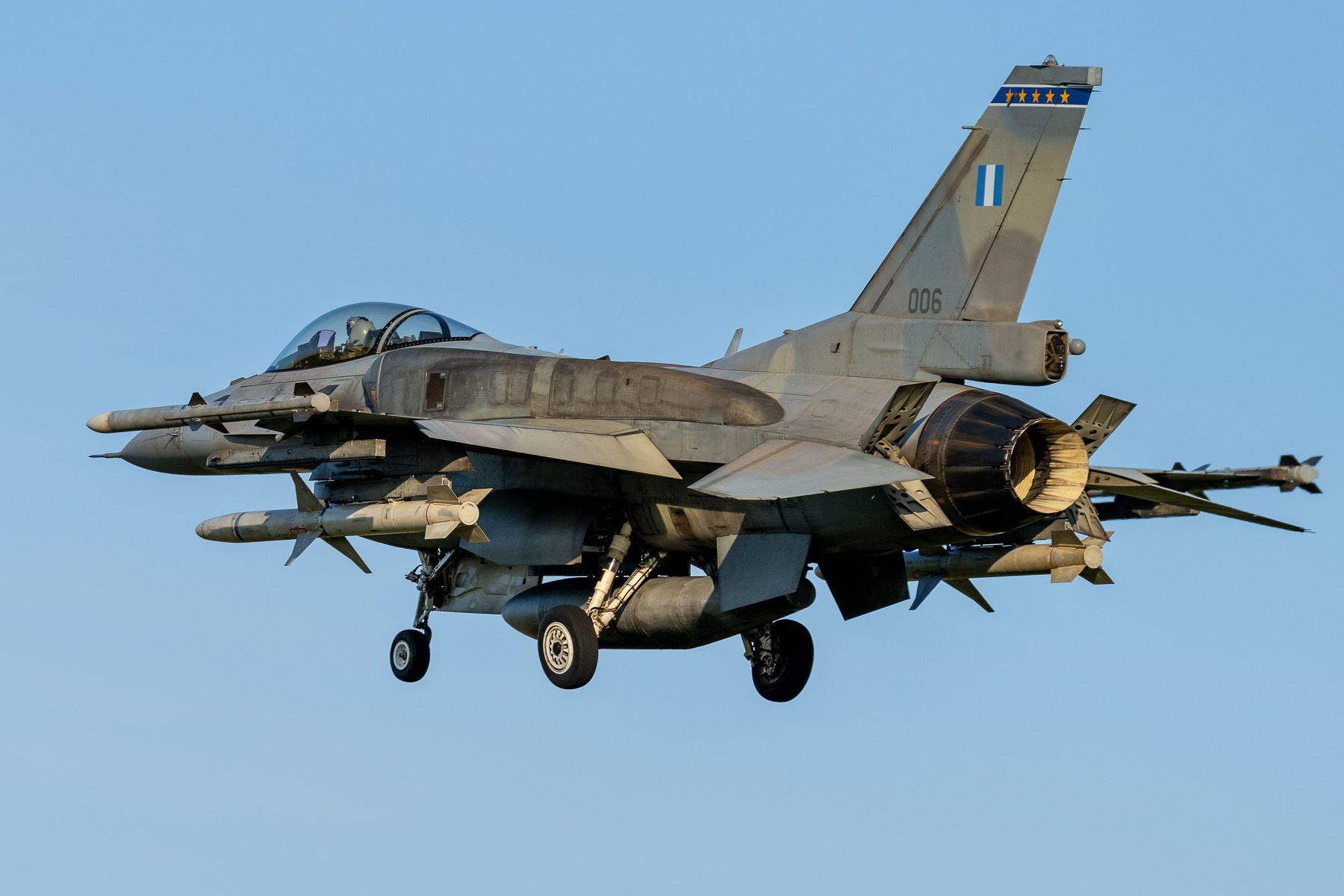
The exercise programme
Over 90 aircraft of 15 NATO member states participated in the exercise; a complete list of units can be found at the end of this article. Furthermore, there were observers from Belgium and the Czech Republic, while Polish forces assisted in operating a ground-based Patriot unit. Lt Col. Friis guides us along the various missions flown.
“For the first three days, we conducted the Integrated Air and Missile Defence phase. Integrated means that we are defending our airspace or our territory with a mix of aircraft and ground- or sea-based surface-to-air missile air defence. We did that in what is called a semi-permissive environment. Regarding the latter, there are three types: non-permissive, semi-permissive and permissive. In Afghanistan for example, we did not encounter any air threat and we could do whatever we wanted, therefore permissive. The opposite, or non-permissive, is where there are several layers of short-, medium- and long-range surface-to-air missile sites that are able to shoot at us. That is a hard, if not to crack area. Semi-permissive meets in the middle, where we assume that we have some manoeuvring space after taking out some of their systems.
Following that first phase were four days focusing on Counter Air-to-Air Defence (C-A2AD), where we struck back against the opponent that deployed a number of threats, both simulated and actual, including ships and aircraft.”
In reality, during a possible air war, it is likely that there will be some areas over the friendly side of the border that are covered by enemy air defences. These so-called bubbles have a high priority to attend, by C-A2AD. “This is a discipline that is, so to speak, fairly new. We are currently developing it within NATO Air Command. During Ramstein Flag 25 it was trained for the first time,” Friis explains.
Although trained separately during RAFL25, both Integrated Air and Missile Defence and Counter Air-to-Air Defence will go hand in hand in real life, to make sure to get at least a par on air superiority or to have some kind of counter-attack ability.
The final days of RAFL25 involved Air Power Contribution to Land Operations (APCLO).
“If NATO is attacked, it is probably on the ground, with the army requiring immediate assistance. But to enable us to do so, we need to take out the worst threats first, so to speak. This was the exercise focus for the last two days,” Friis concludes on the programme.
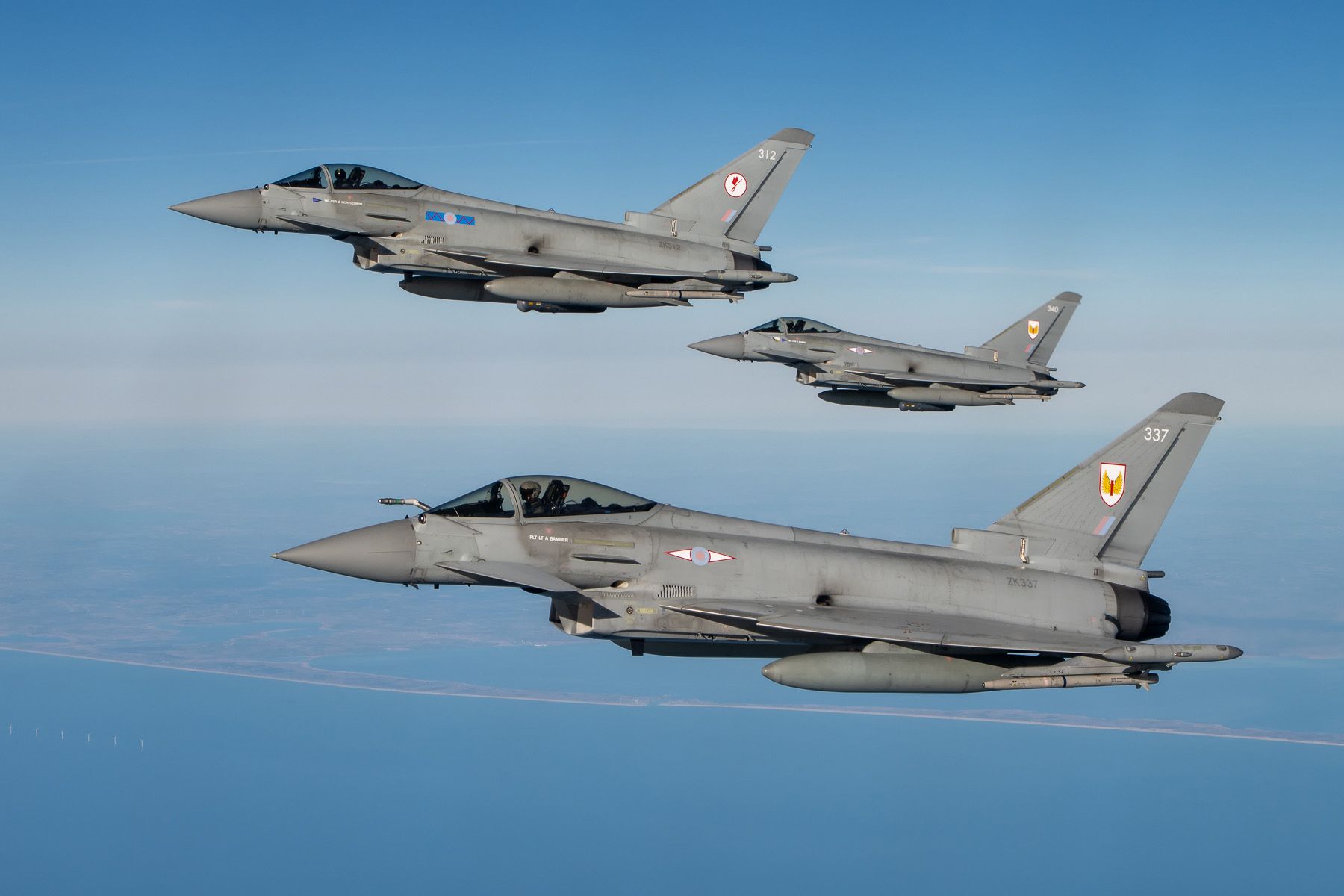
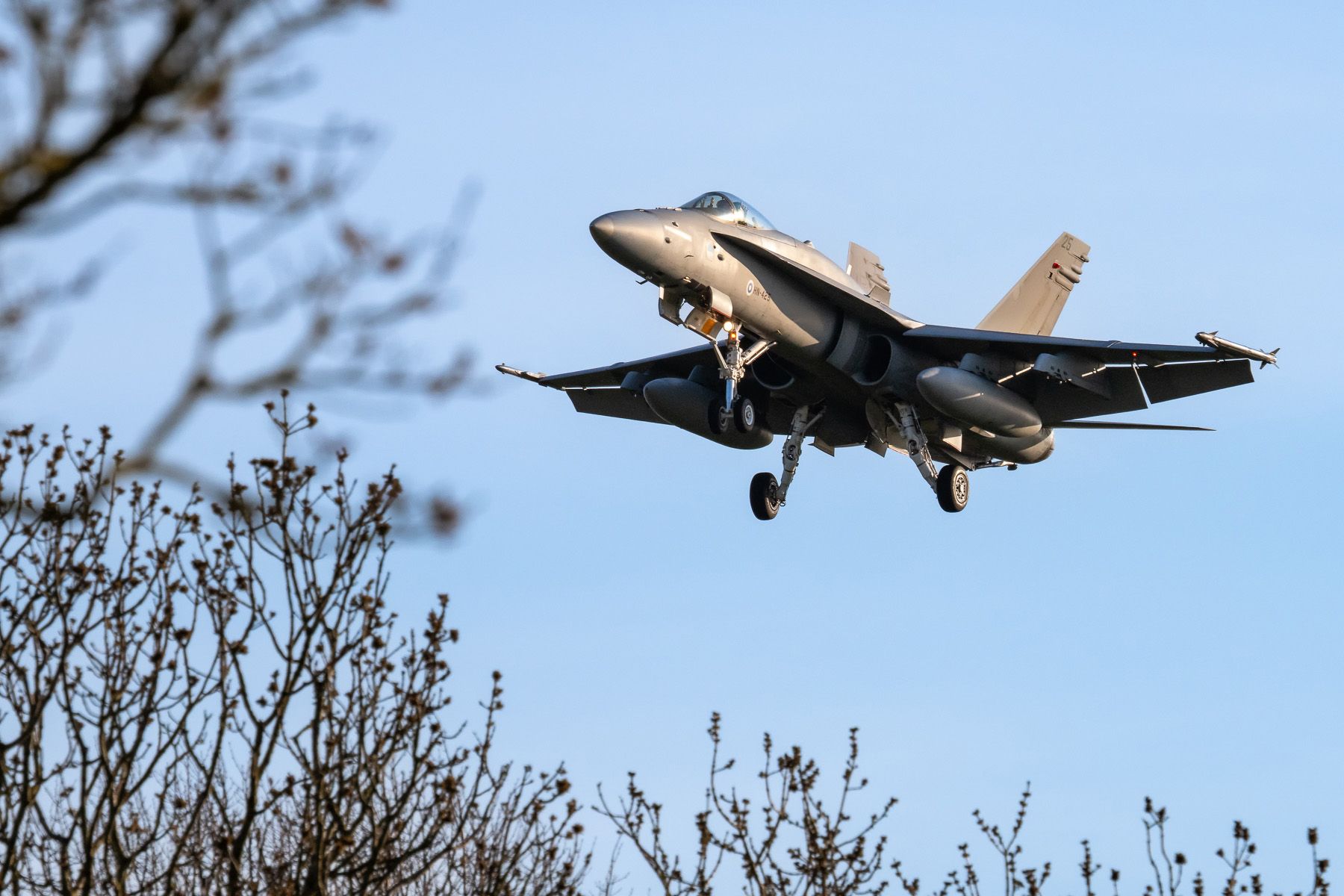
Blue and Red
The practice area for all missions was situated mainly over the North Sea, partly overlapping the Northern part of the Netherlands including Leeuwarden air base, and measuring some 200NM (370km) from North to South, and 100NM (185km) from West to East. In general, the Blue Forces representing the good guys operated from the North, with air refuelling stations off the Danish Coast, while the opposing Red Forces flew in from the South, in their turn having tanker aircraft available just off the island of Texel. All participants played their part as villains in turn, while receiving guidelines from the exercise directors how to act during each particular mission. A unit that flew some half of their RAFL25 missions as bad guys is the Taktisches Luftwaffengeschwader 71 ‘Richthofen’ from the German Air Force, operating Eurofighters. You can read a bit more about it in this sidebar article.
A purely Red Forces asset was supplied by the civilian contractor Draken, that forwarded one of their Falcon 20 jets to Leeuwarden. Alastair Balmain, head of communications at Draken, explains their small but vital contribution: “Our crew was involved in jamming both communications and radars. We can apply different levels in those, but for Ramstein Flag, we used a somewhat lower level of jamming that suited the exercise best.”
One would expect that the current generation of secure communications and radar systems would be largely immune for external disturbances. “Still, there are ways to do this. We learned quite a lot from the conflict in Ukraine, to effectively train crews to cope with jamming and spoofing,” explains Balmain.
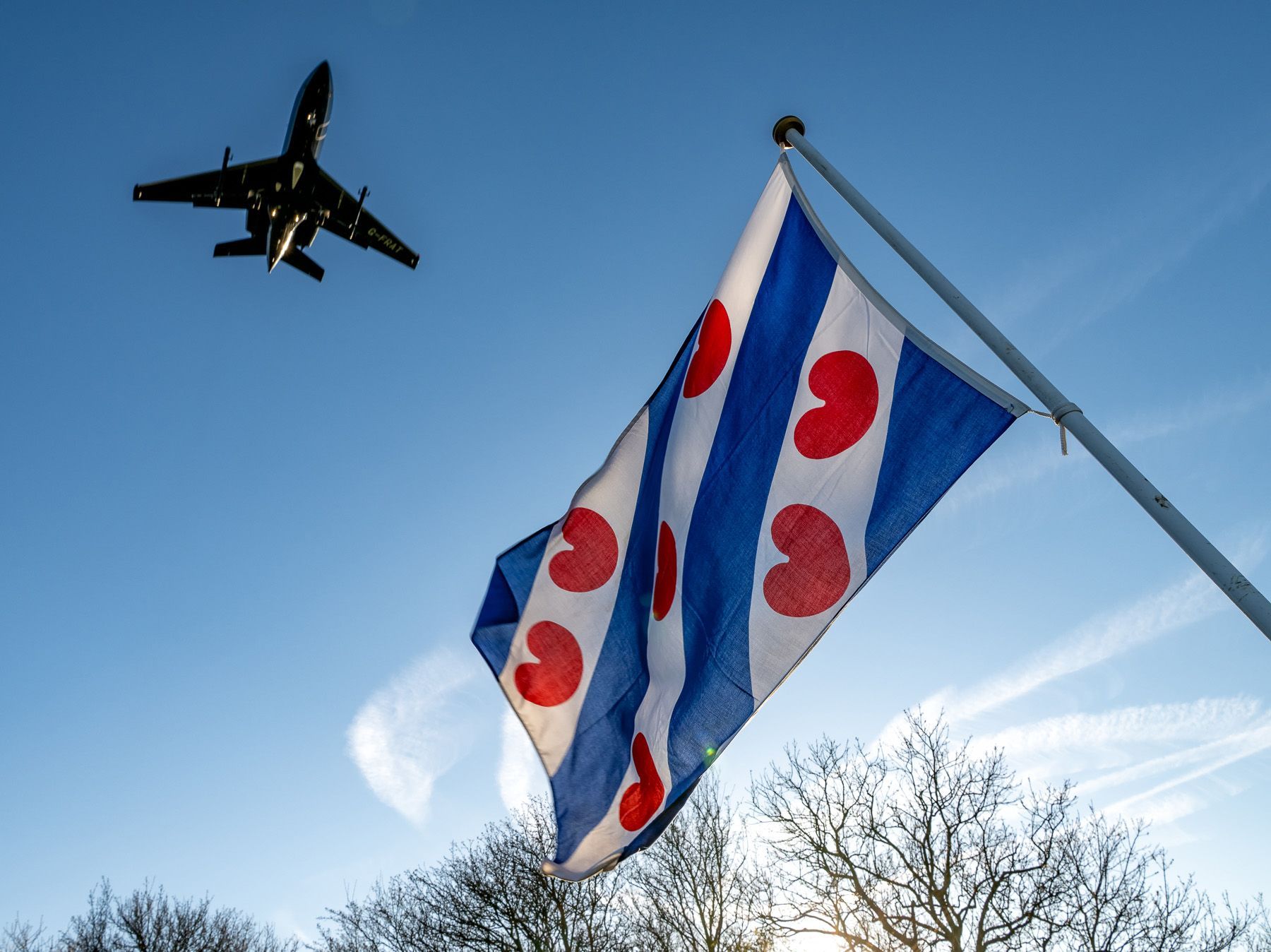
Surrounded by darkness
Compared to the earlier mentioned Frisian Flag exercises, it was not only the scale that was different.
“The missions flown during Ramstein Flag 25 were either conducted just before sunset, or in darkness,” explains Commodore van Egmond. “The weather has been great, which is always a challenge in Holland, but even the Greeks were happy with the weather that they had here, so I think that says something. The fact that we have flown nearly all missions with all aircraft being able to take off, with only very few fallouts, is also something great. But of course, there are always lessons learned.”
Van Egmond continues with a metaphor: “Like soccer players on a field, they can be very good individually, but only with a good coach and strong training you can create the greatest team in the world that can become world champion. In NATO we have different types of aircraft and units, and during exercises like Ramstein Flag we learn the strengths and weaknesses of those, and learn how we can utilize each other in the best way. This makes the sum of all parts larger than the normal sum.”
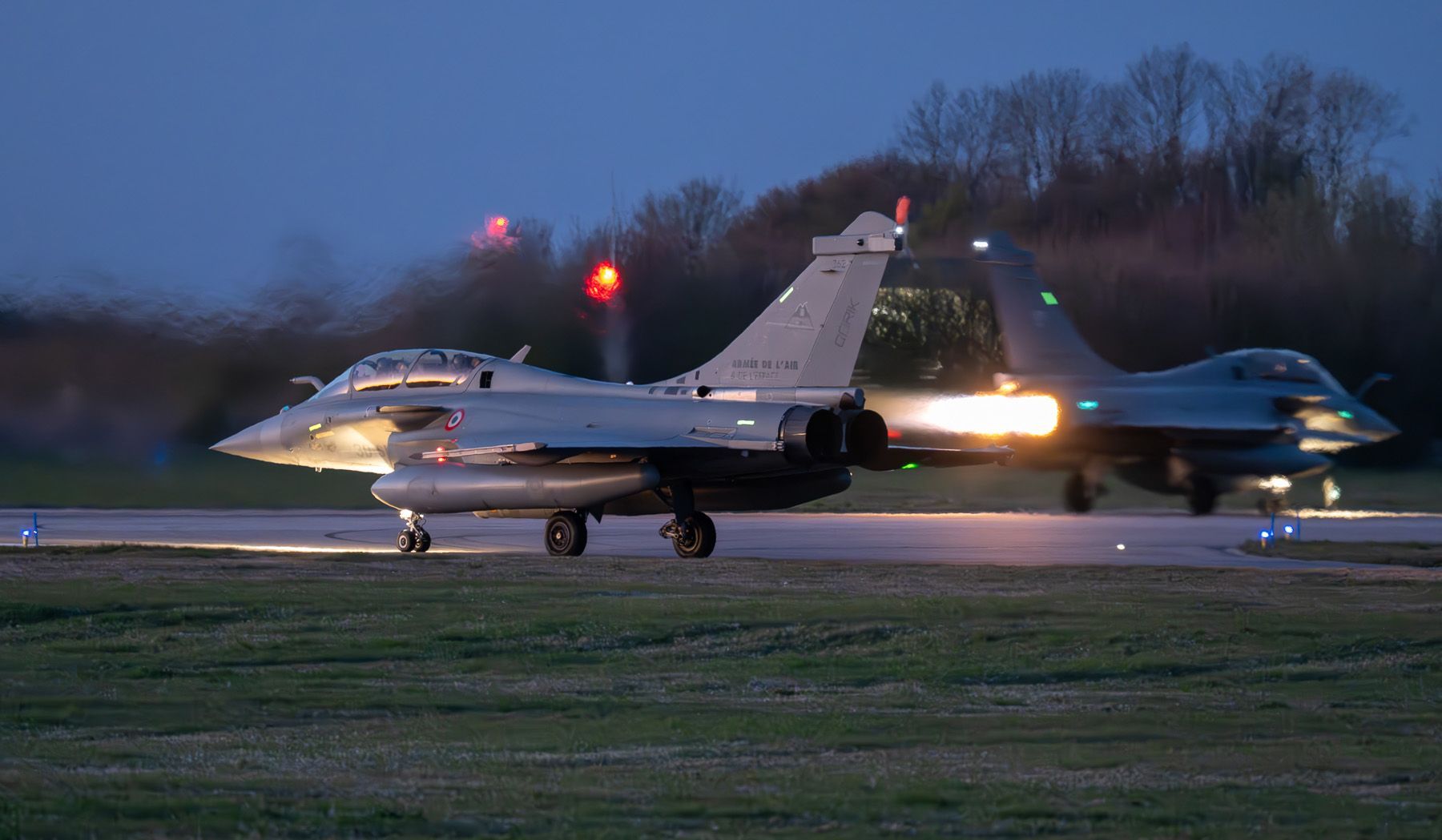
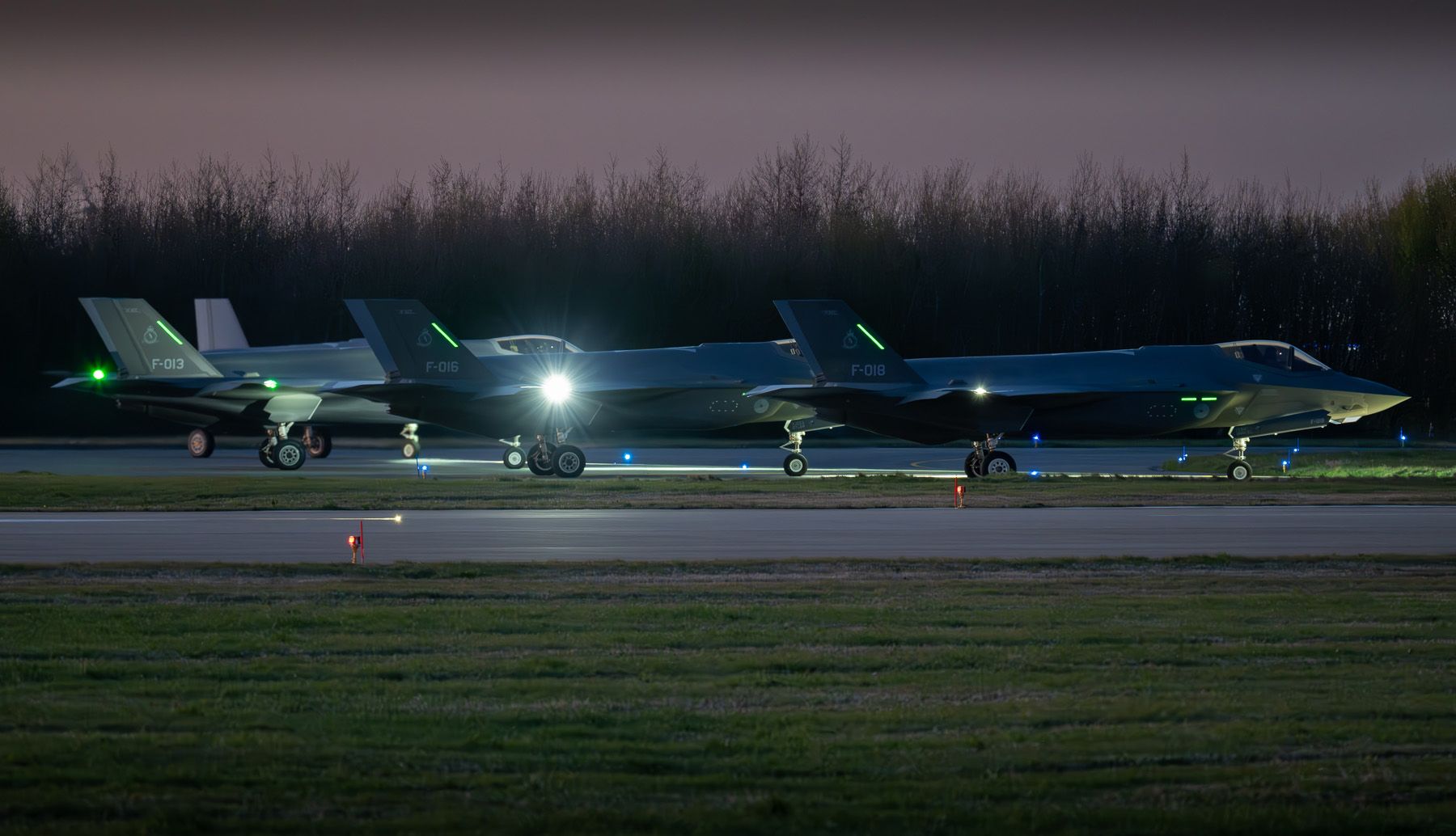
All Red Forces threat, including the surface-to-air missile site, have been either eliminated or have retreated behind enemy lines. One pilots reports Bingo fuel, meaning he has to refuel or to land soon. The mission is completed. Well, almost. Over the North Sea, the various participants rejoin in formation to prepare their return-to-base, while the refuellers have served their last receivers and discontinue their orbits as well. After landing, an extensive debriefing waits. Were all encountered threats effectively identified and eliminated? What could have done better to prevent that particular kill? All these lessons will improve skills and tactics for everyone involved in the exercise, as well as create a better understanding of each others possibilities and flaws. In the end, it is all about teamwork.
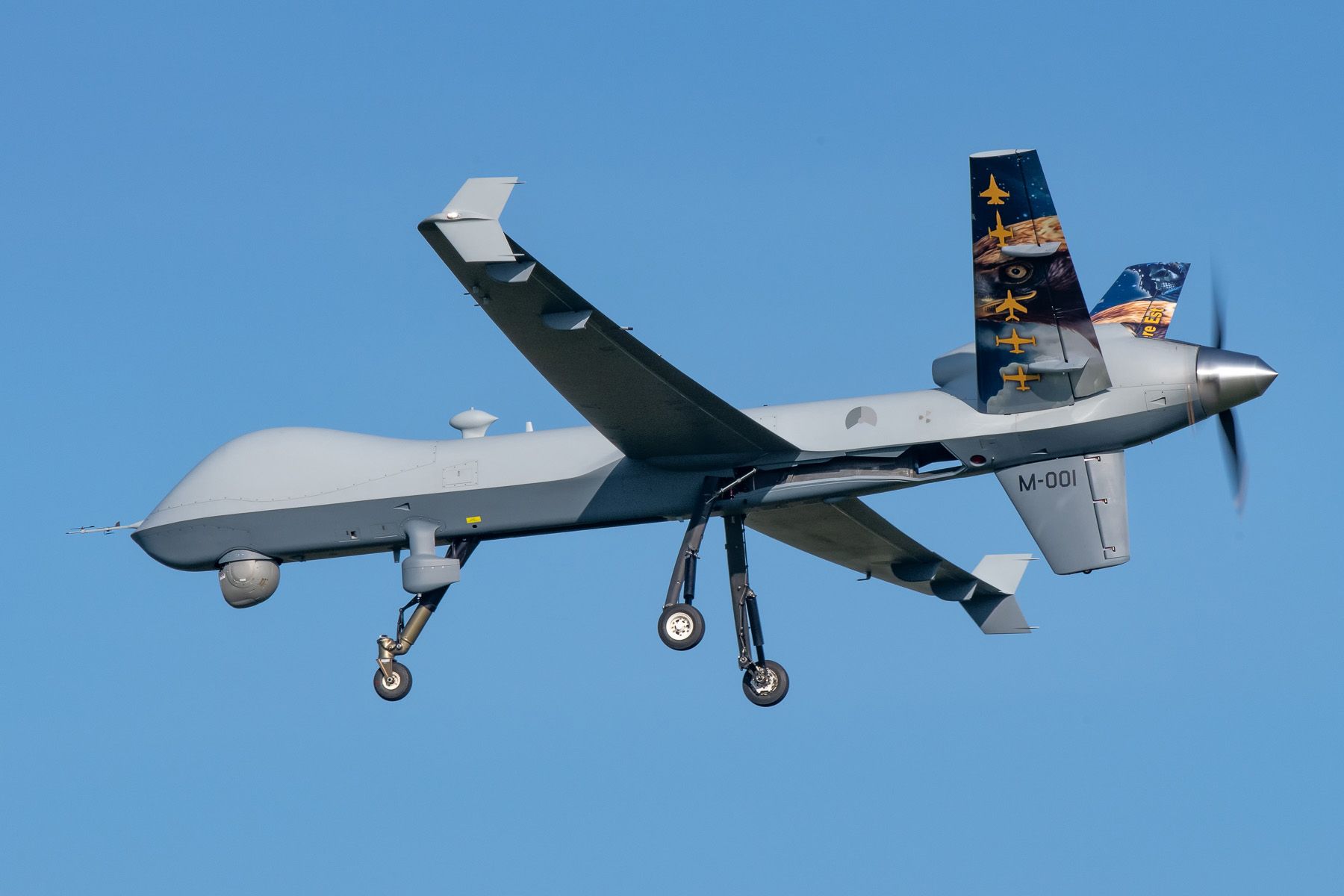
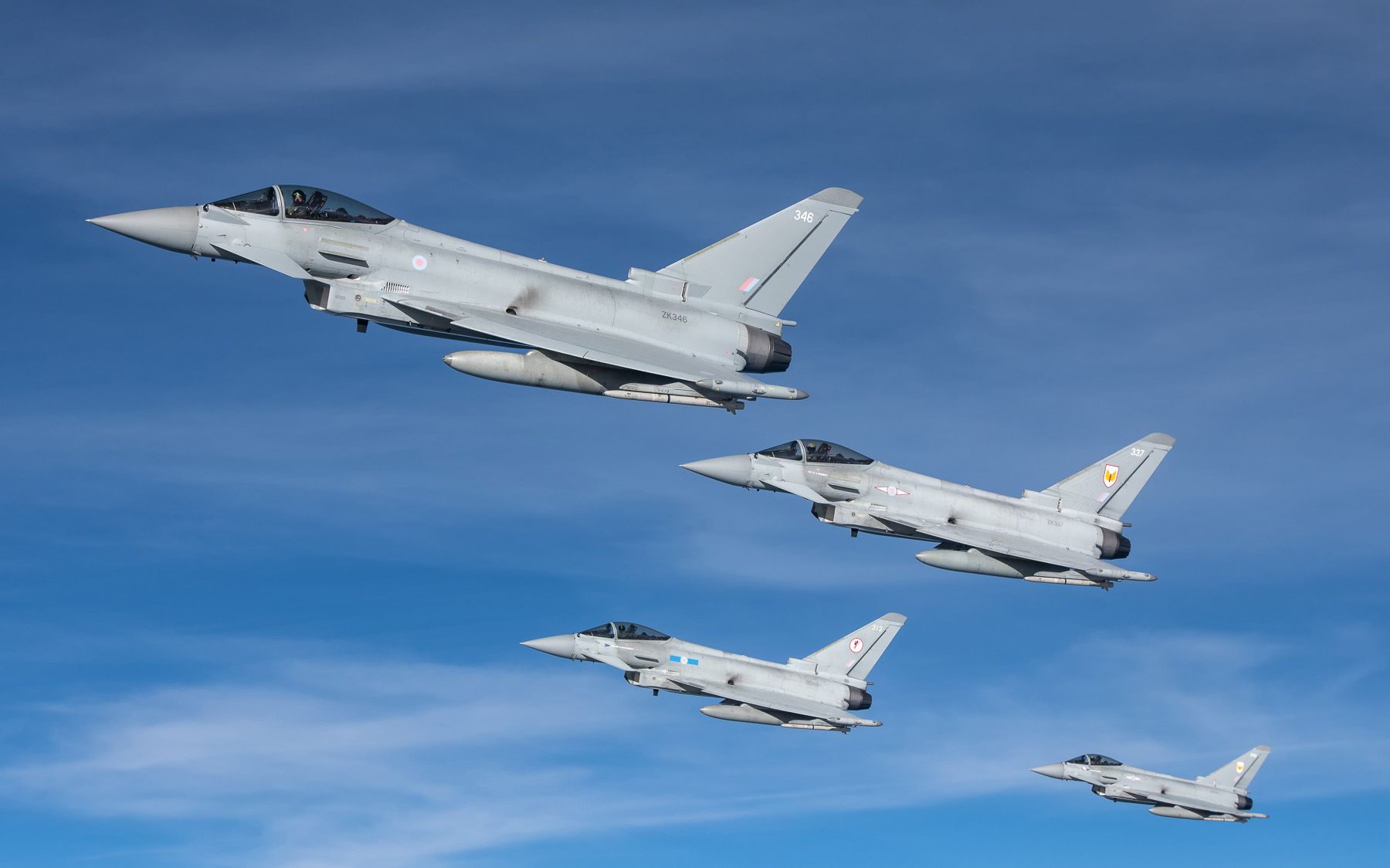
Lessons learned for the future
Van Egmond: “In Ramstein Flag, our overall objective was to make sure that we demonstrated the capacity of air power, and make sure that if someone was watching somehow, either from space, from a ship or by someone with binoculars, we showed how good we are to make sure that they understand it is not worth challenging us.”
For future, similar large air exercises, there is always a wish-list, according to Van Egmond: “So if you ask me what could be improved, I think it will be in the tactics and the training level of people that come here, to keep working on getting better over time. Still, you could see this group grow quickly. For example, during the first, Integrated Air and Missile Defence part of the exercise, things on the third day went much better than on the first day. The same happened during the second stage of the exercise.”
Another point that could be incorporated into future exercises, is the so-called Agile Combat Employment (ACE). Lt Col. Friis on this matter: “The purpose of ACE is to remain unpredictable. For example, by moving around the aircraft, not only on base such as parking these at changing places, but also after a mission by landing somewhere else to refuel and reloading, you make it harder for the opponent to target your assets. Unfortunately, this was not possible during RAFL25, but it would be great to incorporate this in the future.”
Finally, the addition of of live virtual constructs will greatly enhance exercise scenarios. It means to create a computerized input in the total air picture, and then use it during the planning and mission. Applying these will also circumvent the lack of certain real assets. In RAFL25, simulated threats were provided via the Link 16 system. These included cruise missiles, but also virtual hostile weapons. It is a training aspect with which the exercise organizers are continuously experimenting. Anyway, all the experiences gathered during this exercise will form the basis for a future edition of Ramstein Flag, to continue to train for an Article 5 situation nobody wants to experience, but nevertheless ensures NATO is prepared. ■
The author would like to thank those contributing to this article, specifically José R. Davis, Public Affairs Officer at the NATO Allied Air Command; Capt. Maike Lauer, Public Affairs Officer at the MMU Unit; and everyone with the Communications & Public Affairs sections of the RNlAF Air Combat Command and Leeuwarden Air Base.
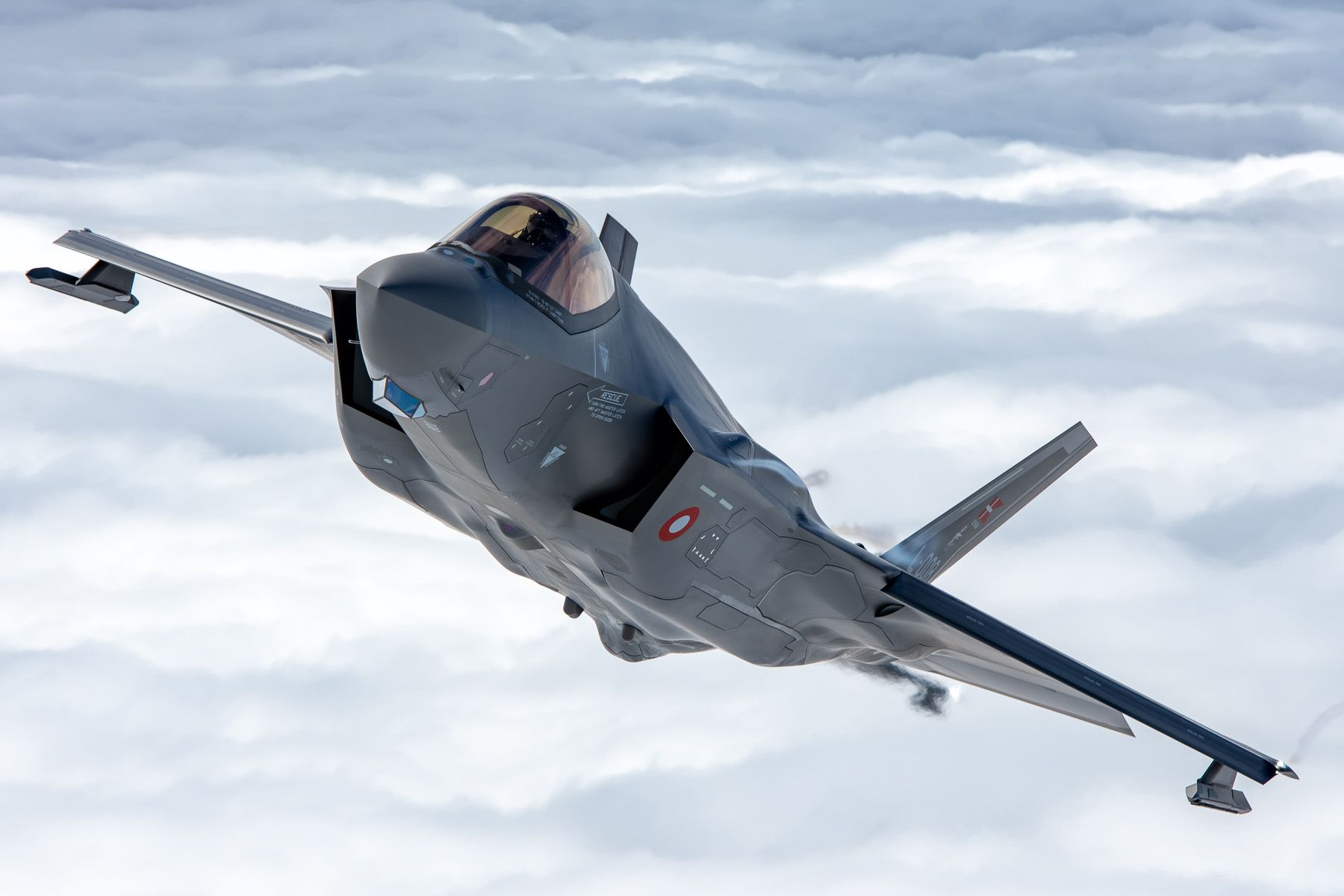
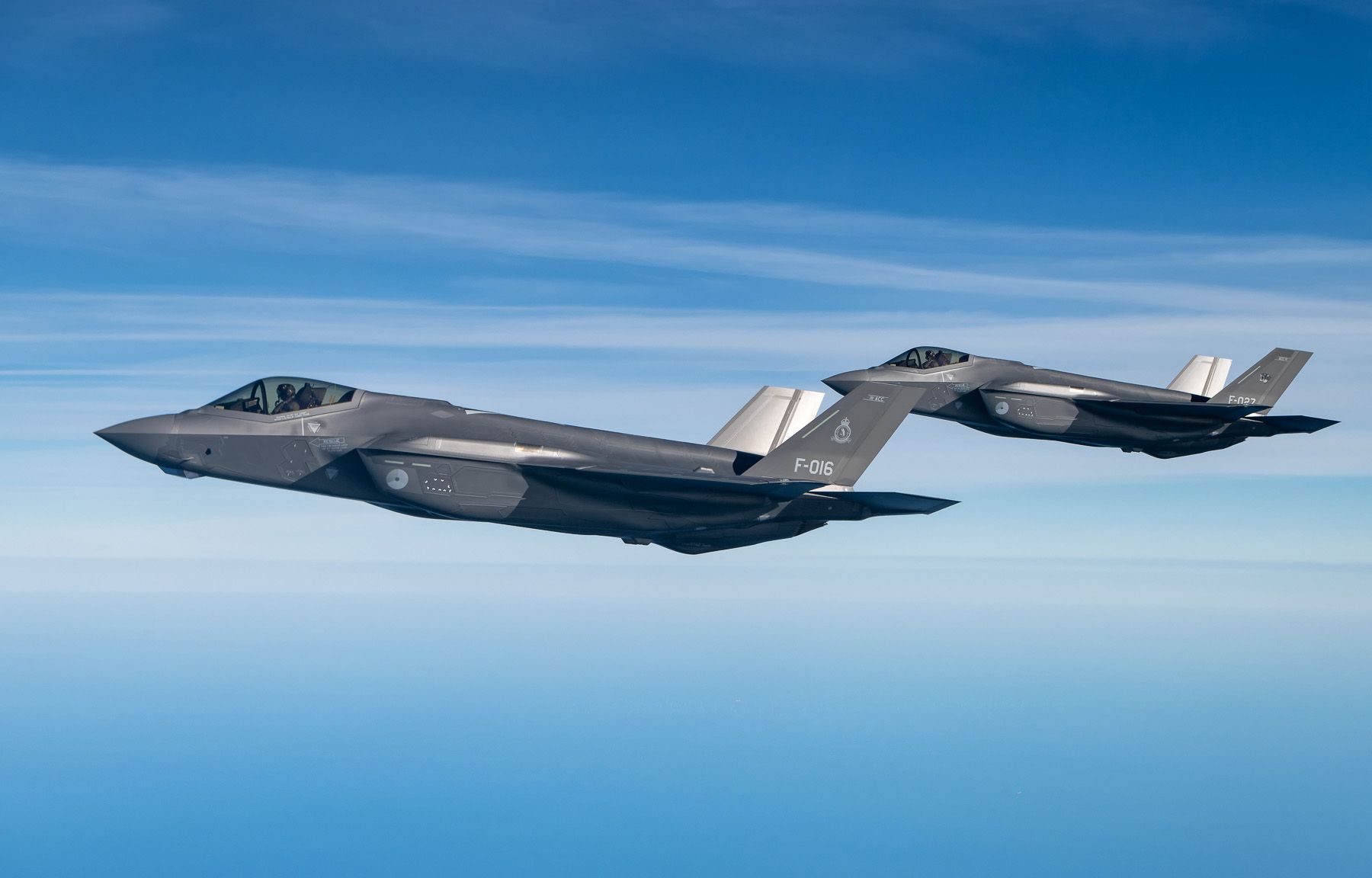
What’s in a name
So, what is the story behind this exercise being called Ramstein Flag? First, the Flag refers to the kind of large combined air exercises already held since 1975, when the mother-of-all-flag-exercises was conducted from Nellis AFB, Nevada: Red Flag. Direct reason to create this opportunity was the under-performance of US crews in air combat over Vietnam, and the need to improve this skills. Red Flag gradually became the largest air exercise worldwide, and we would see several colourful spin-offs such as Green Flag, Blue Flag (over Israel) and even a Red Flag Alaska. Also, there are variants with a local shade: Maple Flag (Canada, of course), Desert Flag (over the hot and sandy Emirates) and the mentioned Frisian Flag. And in 2024, Ramstein Flag joined the club when held for the first time. And why named after Ramstein? Well, that is the location of NATO Allied Air Command.
Last but not least: for those interested, here is a rundown of the various units involved in RAFL25.
Combat aircraft
- Koninklijke Luchtmacht (Royal Netherlands Air Force): 313 & 322 squadrons with F-35A Lightning II at Leeuwarden
- Ilmavoimat (Finnish Air Force): Hävittäjälentolaivue 31 with F/A-18C Hornet at Leeuwarden
- Flygvapnet (Swedish Air Force): 71. Stridsflygdivisionen with JAS 39C/D Gripen at Leeuwarden
- Flyvevåbnet (Danish Air Force): Eskadrille 727 with F-35A Lightning II at Skrydstrup
- Luftwaffe (German Air Force): TaktLwG 71 ‘Richthofen’ with EF 2000/2000T at Leeuwarden
- Royal Air Force: 1 (F) & 6 Squadrons with Typhoon FGA.Mk 4 at RAF Lossiemouth
- Armée de l’Air et de l’Espace (French Air & Space): ECE 1/30 ‘Côte d’Argent’ with Rafale B at Leeuwarden
- Ejército del Aire y del Espacio (Spanish Air & Space Force): Ala 12 with EF-18M Hornet at RAF Marham
- Aeronautica Militare (Italian Air Force): 102° Gruppo / 6° Stormo with F-35A Lightning II at Skrydstrup
- Magyar Honvédség (Hungarian Defence Forces): 101. Repülődandár with JAS 39C/D Gripen at Skrydstrup
- Forţele Aeriene Române (Romanian Air Force): Escadrila 48 Vânătoare F-16AM at RAF Fairford
- Polemikí Aeroporía (Hellenic AIr Force): 343 Mira / 115 Pteriga Mahis with F-16C/D Block 72 at Leeuwarden
- Türk Hava Kuvvetlerı (Turkish Air Force): 151. Filo / 5. Ana Jet Üs with F-16C/D at RAF Fairford
- US Air Force in Europe: 495th Fighter Squadron / 48th Fighter Wing with F-35A Lightning II at Leeuwarden
Air refuelling aircraft
- NATO: MMU with A330 MRTT at Eindhoven & Cologne-Wahn
- Royal Air Force: 10 & 101 Squadrons with Voyager KC.Mk 2/3 at RAF Brize Norton
- Armée de l’Air et de l’Espace (French Air & Space Force): EARTS 31 with A330 MRTT at Istres-Le Tubé
- Aeronautica Militare (Italian Air Force): 8° Gruppo / 14° Stormo with KC-767A at Pratica di Mare
- Türk Hava Kuvvetlerı (Turkish Air Force): 101. Filo / 10. Ana Jet Üs with KC-135R at RAF Fairford
- Royal Canadian Air Force: 437 Squadron / 8 Wing with CC150 Polaris at Eindhoven
- US Air Force in Europe: 351st Air Refueling Squadron / 100th Air Refueling Wing with KC-135R at RAF Mildenhall
Other support assets
- NATO: NAEW&CF – E-3A Component with E-3A at Geilenkirchen
- Koninklijke Luchtmacht (Royal Netherlands Air Force): 306 squadron with MQ-9A Reaper at Leeuwarden
- Koninklijke Marine (Royal Netherlands Navy): Frigate Zr.Ms. Tromp carrying an 860 squadron NH90-NFH
- Armée de l’Air et de l’Espace (French Air & Space Force): EC2A 36 with E-3F at Avord
- Aeronautica Militare (Italian Air Force): 71° Gruppo / 14° Stormo with Gulfstream E-550A at Skrydstrup
- Draken (civilian contractor): Falcon 20 at Leeuwarden
